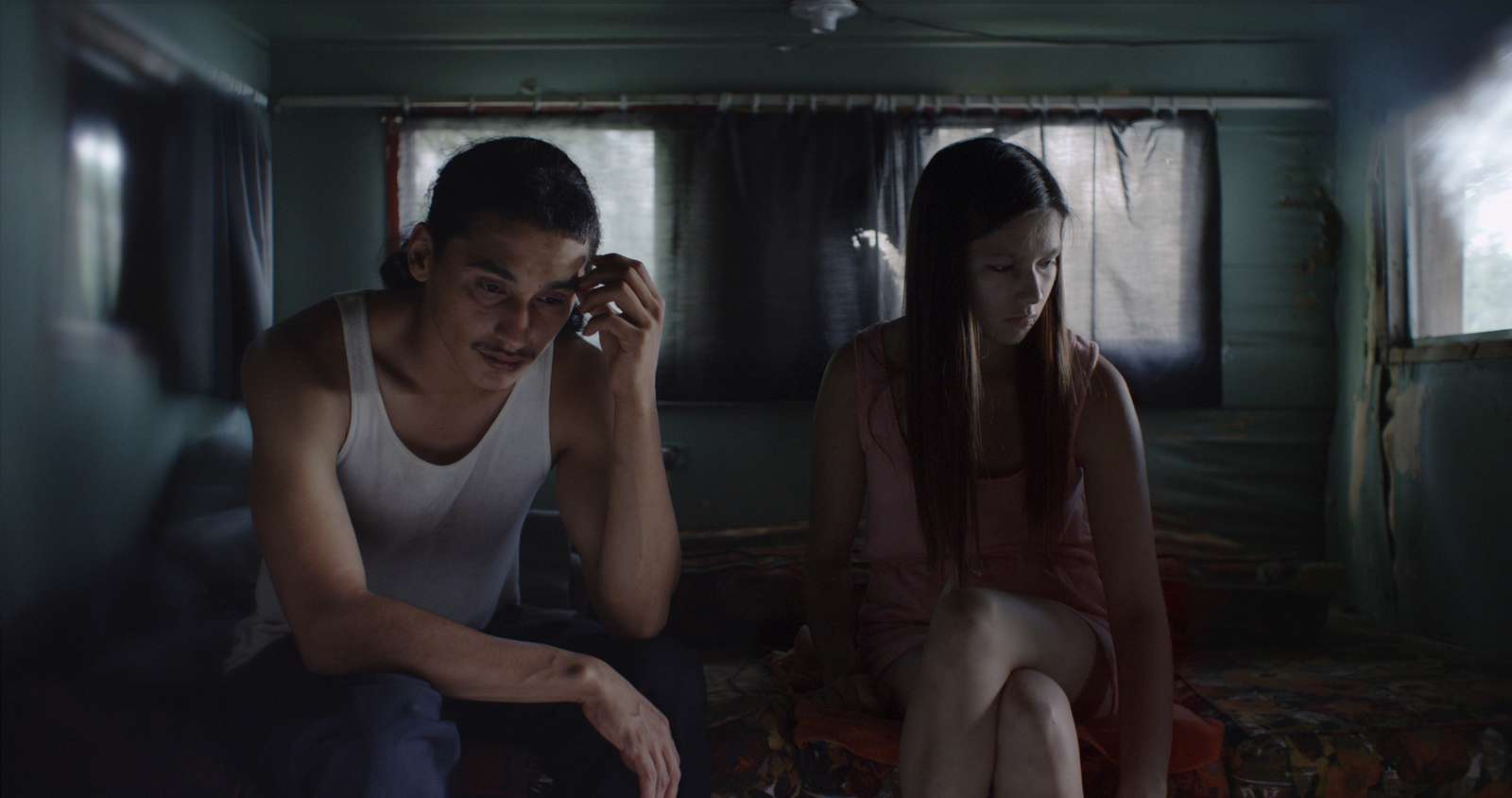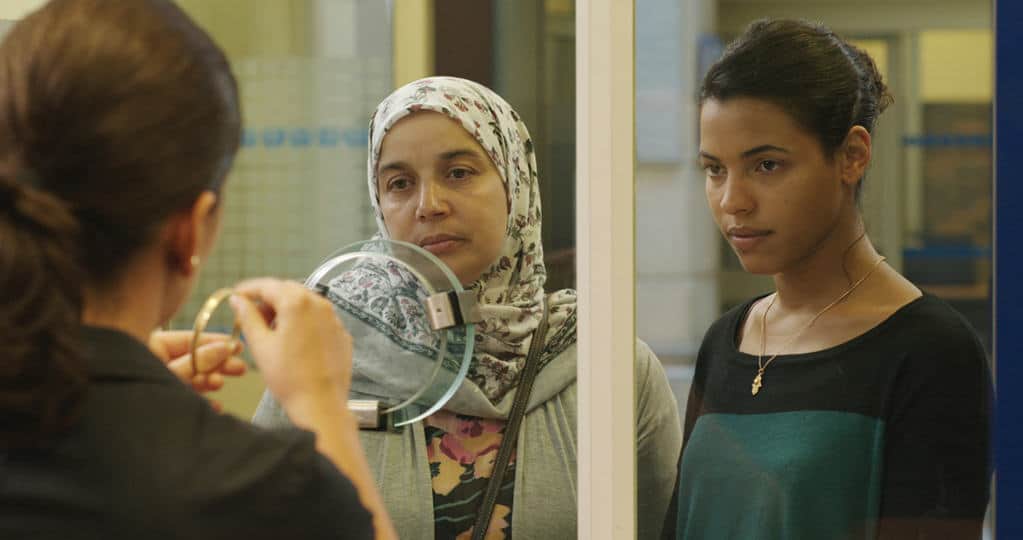Joshua Oppenheimer discusses his collaboration with Adi Rukun, the importance of empathy, and the magical realist landscape and soundscape of his Oscar-nominated documentary The Look of Silence. This is an excerpt from the ebook In Their Own Words: Documentary Masters Vol. 1.
To read the full interview, purchase a copy of the ebook here.
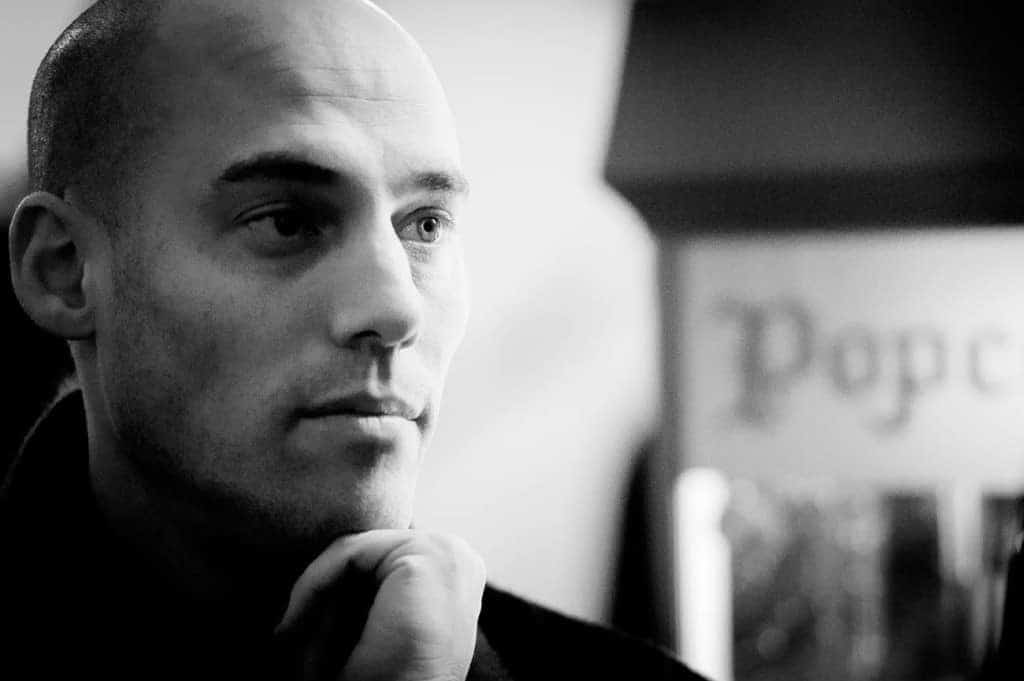
Discover one film you didn’t know you needed:
Not in the zeitgeist. Not pushed by streamers.
But still easy to find — and worth sitting with.
And a guide to help you do just that.
Is it possible to confront the men who murdered your older brother in such a way that facilitates dialogue and reconciliation? It’s a feat that would require someone with enormous empathy. But this is precisely what Adi, an Indonesian friend of documentarian Joshua Oppenheimer, felt he needed to do after seeing the footage from Oppenheimer’s The Act of Killing. In his remarkable new film, The Look of Silence, the director follows Adi as he seeks out the men responsible for his older brother Ramli’s death to give them an opportunity to repent. If they admitted their wrongdoings, Adi felt, “he could forgive them. He would be able to reconcile his family with the families of the perpetrators living around him. In that way, his children would not have to grow up anymore afraid of their neighbours.”
Read more: Deafening silence: Joshua Oppenheimer’s The Look of Silence and Christian Petzold’s Phoenix >>
In 1965, the Indonesian military dictatorship mobilized civilians to exterminate the country’s communists, amounting to over 1 million murders. Anyone opposed to the military dictatorship at the time could be labelled a “communist,” including union members, landless farmers, and intellectuals. Remarkably, the perpetrators continue to remain in power, creating a culture of fear and silence. In The Act of Killing, Joshua Oppenheimer filmed the perpetrators as they boastfully re-enacted their killings. In The Look of Silence, he revisits the men responsible for Ramli’s death with Adi to film their encounters with “precision and intimacy.”
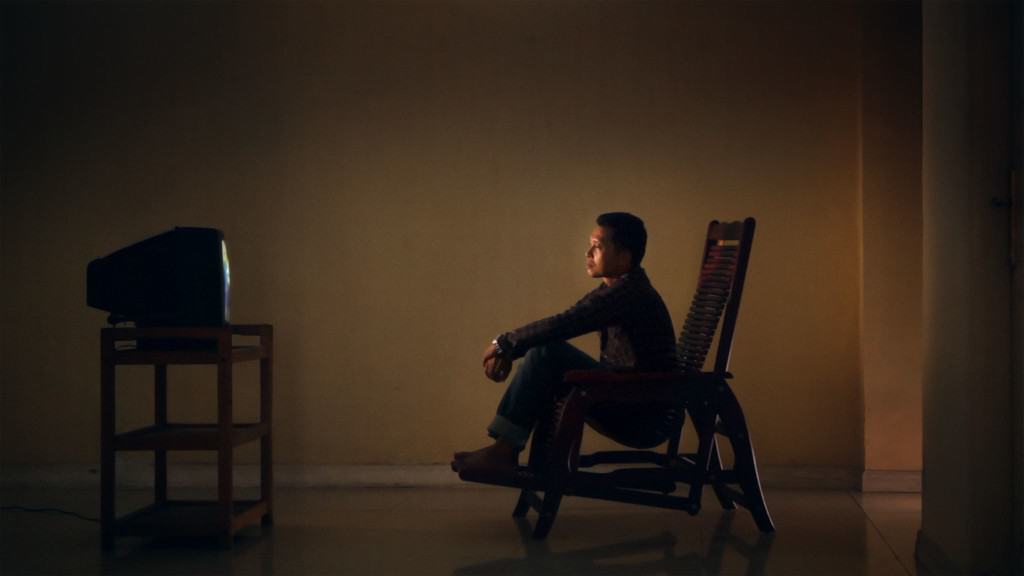
Oppenheimer recalls that the first time he showed Adi footage from The Act of Killing, “Adi had very much the same reaction as he has in the movie, which we shot in 2012. I originally shot that material in 2003. I remember Adi saying, as he says in the film, ‘He must feel so guilty, otherwise he wouldn’t need to feel so numb.’ Whereas I remember feeling, as I’m sure the audience feels, that this man’s a monster.” Oppenheimer admiringly continued, “That instinct to empathize and understand and see everyone as a human being is something that defines who Adi is and that I learned from Adi, actually.”
[clickToTweet tweet=”That instinct to empathize and understand and see everyone as a human being defines Adi.” quote=”That instinct to empathize and understand and see everyone as a human being is something that defines who Adi is and that I learned from Adi, actually.”]
I was struck by how calm and composed Adi remains throughout all of his interactions with the perpetrators in The Look of Silence. “Adi is a man who never really gets angry. You have to push him very hard,” explained Oppenheimer. But this doesn’t let the perpetrators off the hook. Instead, Oppenheimer reasoned, “I think it makes it harder for the perpetrators. Adi goes with this humanizing gaze, refusing to see them as anything other than human, showing that he’s willing to forgive. They’re forced to return Adi’s calm, humanizing, understanding gaze. They’re forced to see him as a human being and to realize that, by extension, Ramli is a human being, too. All of their victims were human beings. Consequently, all of the lies they’ve told themselves demonizing their victims are lies. As that armour shatters and crumbles and falls away, you see them desperate, defenseless, scrambling for new lies to protect themselves. You see them panic. You see them get angry. You also see them create new forms of denial, denying responsibility that just moments earlier they were declaiming.”
Oppenheimer predicted that the perpetrators would not be able to ”find the courage to say what they did was wrong. Instead, I [thought] they [were] going to panic in response to Adi’s gaze.” So the challenge, Oppenheimer said, was to find a way to capture the emotions behind the confrontations to ”make visible the prison of fear in which everyone in Indonesia is living” so that anyone who sees The Look of Silence would support “truth, reconciliation, and justice.” In this way, they could succeed “through the film as a whole, in a much bigger way, where we might fail in these individual confrontations.”
To read the rest of the interview with Joshua Oppenheimer on The Look of Silence, purchase a copy of the ebook In Their Own Words: Documentary Masters Vol. 1 here.
[wcm_restrict]
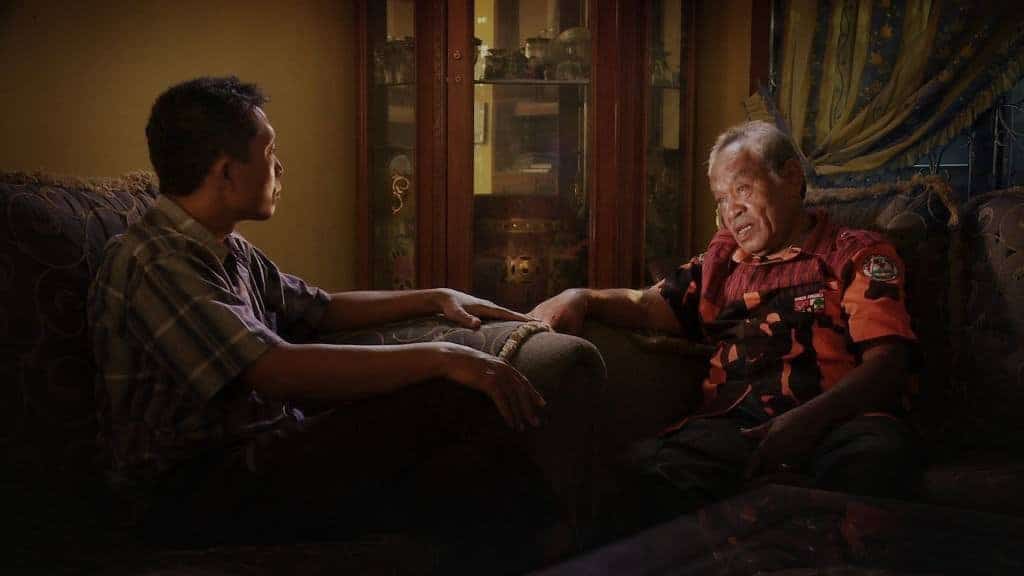
“The first insight,” Oppenheimer recalled, “was that they’re not interviews. An interview is a form of questioning that’s about eliciting information and feelings about things. But what Adi was trying to do was to confront people in such a way that dialogue might be possible, that could lead to reconciliation, that could lead to a fundamental change to Adi’s circumstances. When you’re interviewing someone, it’s not to do something for yourself. And when I realized that, I understood, ‘OK, I need to film this like a film scene. This has to be filmed like a drama. What is going to matter here? Is it going to be the words and the actions or the reactions and the emotions?’”
[clickToTweet tweet=”It’s a grammar reserved normally for dialogue. But here, it’s the silence that’s speaking.” quote=”The camera is panning back and forth at the end, following, instead of words, silence and shame. It’s a grammar reserved normally for dialogue. But here, it’s the silence that’s speaking.”]
The answer came to him when he shot the scene with Adi’s uncle, when they discovered that he was complicit in Ramli’s murder, but can’t admit to having committed a crime. It was the first encounter that they filmed, and it prepared them for the other confrontations, both regarding what they could expect to get out of the perpetrators and what film grammar Oppenheimer would use to film them. Oppenheimer noted, “What begins lovingly ends completely broken, unsafe for both of them, emotionally unsafe. That was tragic.” It was the only encounter to be shot handheld. Oppenheimer recalled, “The camera is panning back and forth at the end, following, instead of words, silence and shame. It’s a grammar reserved normally for dialogue. But here, it’s the silence that’s speaking.”
Most of the time though, Oppenheimer used two cameras. But when doing so, Oppenheimer explained, “It’s difficult to avoid very flat lighting when you’re lighting two angles at the same time. But in the end, we did use two cameras wherever possible. The only times we didn’t, and then we had to film as though we were using two cameras, was with the two very powerful perpetrators — the politician and the man who plays the keyboard — because I knew that they were so powerful, that should we have to run away we needed to be able to run away very quickly. We should have as little equipment as possible.”
Finding a way to make the film as safely as possible was a serious concern, especially for Adi’s family, who supported the project but worried. The first confrontation that they filmed was with Inong, one of the leaders of the village death squad, specifically because, Oppenheimer explained, “We knew Inong had a terrible relationship with his commanders, that word of what we were doing was unlikely to spread from Inong to anybody else and, as you notice, Adi didn’t tell Inong that his brother is dead. That was done as a test so that Adi could explain what he’s doing to his mother and his wife. They could watch the scene and decide whether they thought we should continue.”
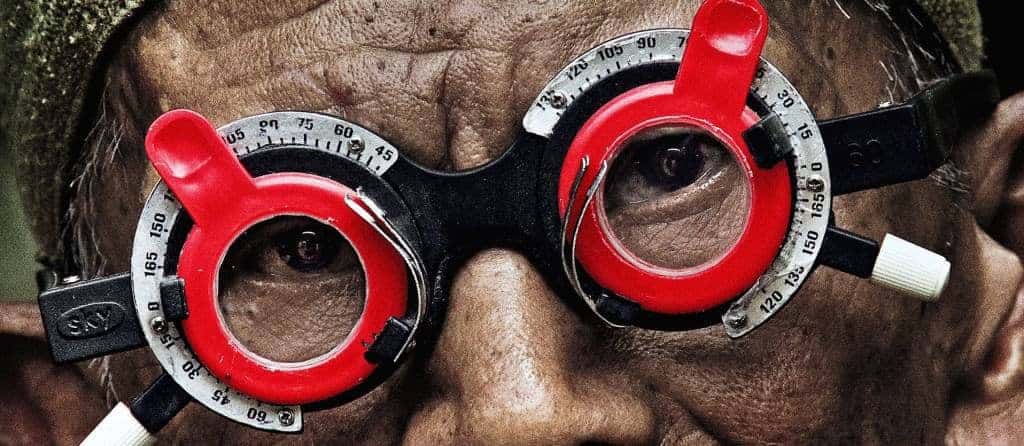
It was during this confrontation that Oppenheimer first got a real understanding of, as he described it, “how to work poetically with this metaphor.” In this case, it was the metaphor of filming “eye tests on men who are willfully blind.” When shooting that scene, Oppenheimer had initially set up two cameras covering complementary directions. But when he “saw Inong’s twitching face, whispering these horrific details of killings, of what he’d done, in such a way as to terrify and impress, framed by this red phoropter, totally blind to the meaning of what he’s talking about. I had the sense that I was looking at a detail from a Hieronymus Bosch painting,” he recollected. “I took that camera, that was maybe covering him partially in profile, and swung it around so that it was frontal on his face and treated his face, for the rest of that scene, like a landscape until the eye test part was finished.”
The poetry in the film isn’t just in the images but in the sound mix, which Oppenheimer refers to as “magical realist in the sense that I’m either totally removing synchronous sound, the ambient sounds, or I’m bringing them down so low that the sound catches up to the image and fades away. There’s a kind of disconnect between sound and image, the way one might have in a dream.” For example, near the beginning of the film, there’s an image of a truck approaching at dusk, illuminated only by the truck behind it. It’s here that Oppenheimer provides chyrons with background information on the genocide. Although we hear the sound of the crickets in the air, we don’t hear the sound of the trucks. Oppenheimer opined that “magical realism is maybe the only adequate fiction genre for addressing haunting and unresolved trauma in conditions of complete political impunity.”
When designing the sound mix, Joshua Oppenheimer “was thinking about haunting, about how to make the presence of ghosts felt. Here were tens of thousands of people in this one region who were murdered.” Their families didn’t know what happened, and their bodies weren’t buried. “While the families would grieve,” he continued, “they couldn’t mourn. They couldn’t work through. They couldn’t put to rest, because they couldn’t acknowledge that their loved ones had died.” In making the film, Oppenheimer felt that it was his job to “re-haunt these landscapes, to create a kind of enchanted landscape, not in the kind of lovely sense but in the haunted sense.”
Editing and mixing the sound for the film was a lengthy process (10 and 6 weeks, respectively), more akin to that for a feature narrative film than a documentary, which is usually takes just a few weeks. Oppenheimer explained, “We removed all of the ambient sounds. We couldn’t replace the dialogue with ADR (Automatic Dialogue Replacement) like you might do in fiction. We had to clean the dialogue, putting in later only what we wanted when we wanted it. For example, in the scene between Adi and [one of the perpetrators] and [this perpetrator’s] daughter, when we wanted to feel the presence of the space, I put one passing car when I wanted it. Or I put children playing outside. But I wanted the audience to be right here [puts hand close to my face to indicate the closeness he’s referring to], right in this very intimate space between Adi and the daughter, where we all are when we’re in the middle of a very intimate conversation.”
Similarly, in the landscape shots that punctuate the encounters throughout the film, Oppenheimer specified that he “took out all the sound. I worked with 16 layers of crickets, who the wonderful sound designer, Henryk Garner, played like a symphony. Sometimes, when we’re in a big wide shot, in a landscape shot, all of them are playing together. When we’re in an intimate scene, for example when Adi is bathing his father, I wanted to feel like the ghost of Ramli is right here, whispering in Adi’s father’s ear, even if Adi’s father can’t hear him anymore. I would play just one cricket solo with no reverberation. When we would go wide from there to a landscape, then of course crickets would come in.This is subtle stuff, but you obviously noticed it. I think it’s what makes this film a kind of non-fiction work of magic realism.”
Oppenheimer used a similar approach to sound design in The Act of Killing. He now considers the director’s cut “a work of non-fiction magic realism. I don’t think it’s a documentary at all anymore, once it’s in its two-hour-and-forty-minute version. It’s a kind of fever dream. It’s cut through by these abrupt cuts to silence, these same haunted landscapes where time stops, and where we feel the presence of the dead, the ghosts that are haunting the whole space in which ‘The Act of Killing’ is unfurling.”
He elaborated, “If you remember the shot after the talk show in The Act of Killing, there’s this kind of alley with these crumbling buildings at dusk. There’s a little girl playing and a man who walks past, and you hear her very faintly talking to herself, but too faintly. You hear nothing else except this kind of hollow space. Or in the big giant fish that closes the director’s cut of The Act of Killing — in the shorter version, it’s just taking credits over it — you only hear the music very faintly, and you hear thunder very faintly, as if it’s coming and going on the wind. But there’s no wind. It’s just coming and going on the kind of bath of insects and other sounds that are there.”
[/wcm_restrict]
